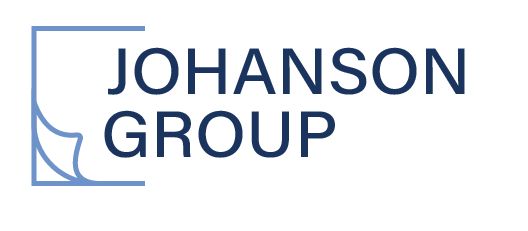Understanding HIPAA Compliance Reports: A Comprehensive Guide
In the ever-changing healthcare field, where protecting patient data and following rules are vital, HIPAA compliance reports are essential for maintaining a robust data protection system.
This comprehensive guide will explore the significance, essential elements, creation process, benefits, and continuous improvement strategies associated with HIPAA compliance.
The HIPAA Compliance Report: A Key to Regulatory Success
HIPAA compliance reports are potent tools that healthcare organizations wield to showcase their commitment to safeguarding sensitive patient health information.
HIPAA compliance audits involve documenting an organization's adherence to the Health Insurance Portability and Accountability Act (HIPAA) regulations. These reports are critical in healthcare, where data breaches and unauthorized patient data access can lead to severe outcomes.
Elements of HIPAA Compliance Reports
A comprehensive HIPAA compliance audit report comprises several vital components, collectively ensuring a holistic view of an organization's commitment to regulatory compliance. From detailed risk assessments to clear policies, workforce training, and strong safeguards, each aspect helps maintain patient privacy and data security.
HIPAA Compliance: The next stride towards a more secure future — for your organization, as well as your patients, customers, and stakeholders.
Creating a Detailed Compliance Report: Step-by-Step Guide
Generating a HIPAA compliance report may seem like a complex task, but with a structured approach, it becomes manageable. Here's a step-by-step guide to help you create a comprehensive and accurate compliance report:
Incorporating Internal Stakeholders and Third-Party Auditors
When dealing with compliance audits, collaboration plays a pivotal role.
Compliance officers and IT professionals, who are internal stakeholders, lend their expertise to the report creation process, ensuring accuracy and relevance. Involving third-party auditors introduces an unbiased perspective, offering new insights into compliance areas that might otherwise be overlooked.
Compliance reporting isn't a static process; it's a catalyst for growth.
Benefits Beyond Compliance: Strengthening Data Security and Trust
HIPAA compliance reports deliver more than regulatory adherence. They fortify data security, reduce breach risks, and uphold patient privacy, fostering trust.
Key advantages include:
Enhanced Security: Reports identify vulnerabilities, bolstering defenses against breaches.
Risk Minimization: Early risk detection curbs breach chances and consequences.
Patient Privacy: Compliance underscores commitment to safeguarding patient data.
Trust Building: Demonstrates data security dedication to patients and stakeholders.
Legal Protection: Accurate reports offer evidence in legal scenarios.
Efficiency: Compliance streamlines processes, improving operations.
Competitive Edge: Compliance fosters reliability and differentiation.
HIPAA compliance offers a holistic approach that safeguards data, patient trust, and organizational integrity.
Ensuring Accuracy: HIPAA Reporting Best Practices
An accurate HIPAA compliance report is paramount for many reasons. Employ these best practices for reliability:
Precise Data Collection
- Gather updated policies, processes, and training records
- Ensure accurate representation of current practices
Clear Assessment Methods
- Select methods aligned with goals and organization size
- Explain methodologies to aid understanding
Thorough Documentation
- Document each step from data collection to actions
- Explain findings and rationale comprehensively
Internal Validation:
- Involve stakeholders in reviews and validation
- Validate findings with solid evidence
Regulatory Alignment
- Compare findings against HIPAA standards
- Highlight areas exceeding regulations
Accessible Presentation
- Explain technical details clearly
- Use visuals for enhanced comprehension
Audit Trail Records
- Maintain an audit trail for transparency
- Allow verification of conclusions
Evidence-Based Approach
- Rely on facts, not assumptions
- Distinguish between observations and interpretations
Embracing these practices ensures that your HIPAA compliance report enhances credibility, aligns with regulations, and highlights your commitment to integrity and health data security.
A well-crafted HIPAA compliance report reflects your organization's dedication to maintaining data security and patient privacy.
Driving Continuous Improvement
Compliance reporting isn't a static process; it's a catalyst for growth. Organizations can leverage these reports to identify areas for enhancement, initiate corrective actions, and monitor progress. Using the insights from compliance reports like HIPAA, organizations pave the way for continuous improvement, fostering a culture of excellence.
Elevating Healthcare Data Security
Comprehending HIPAA compliance reporting highlights its vital role in the healthcare ecosystem. Healthcare organizations can confidently navigate intricate regulatory requirements and patient data security by prioritizing regular reporting and embracing it as a fundamental part of their compliance program.
This goes beyond just a mandate; it reflects a collective dedication to excellence in safeguarding patient privacy and data integrity.
Ready to enhance your compliance journey?
Contact Johanson Group today to explore our risk management reporting, assessments, and auditing expertise. Whether you're aiming for HIPAA, SOC 2, or ISO 27001 compliance, we're here to help you achieve excellence in data security and regulatory adherence.
Reach out today to take the next step toward HIPAA compliance.






